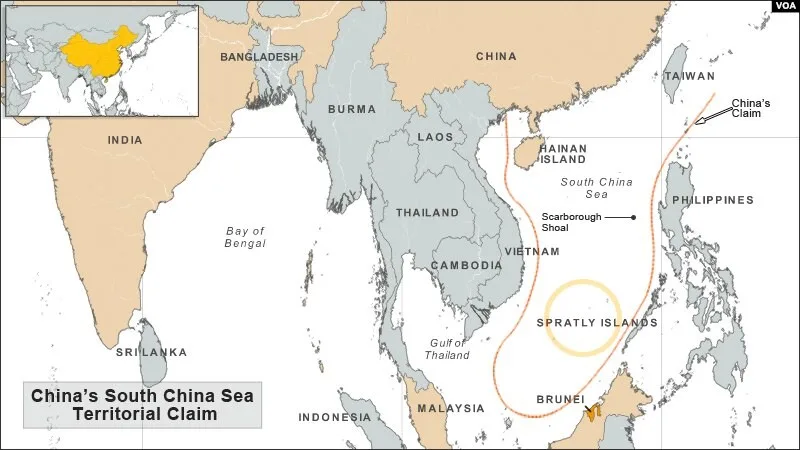Syllabus: GS2/ IR
In Context
- The Philippine accused China of carrying out “repeated aggressive, unprofessional and illegal” actions in the South China Sea.
Background
- The South China Sea, located south of China, is bordered by Brunei, China, Indonesia, Malaysia, the Philippines, Taiwan, and Vietnam.
- The tensions between China and other nations have escalated in recent years, largely due to China’s rise as a global power.
- The South China Sea is of immense strategic importance, and China seeks to control it to assert dominance in the region.
China’s Claims and the ‘Nine-Dash Line’
- China’s territorial claims in the South China Sea are marked by the “nine-dash line,” which was first issued in 1947.
- This line encompasses nearly 90% of the South China Sea, including waters and islands.
- China argues that its claims are based on “historical maritime rights,” though it has not provided clear coordinates for the line.
- To reinforce its claims, China has engaged in activities such as constructing artificial islands, military installations, and ports, particularly in the Paracel and Spratly Islands.

International Response
- China’s claims have been contested by other countries, leading to heightened tensions.
- The United States, seeking to protect its own interests and support regional allies, has increased its military presence and aid to countries opposing China’s claims.
- In 2016, the Philippines brought the dispute to an international tribunal, which largely rejected China’s nine-dash line but China rejected the verdict.
Importance of the South China Sea
- Strategic Importance: It is one of the most strategically and economically important waterways in the world, extending from the Strait of Malacca in the southwest, to the Strait of Taiwan in the northeast.
- It is a crucial maritime gateway and junction for shipping between the Pacific and Indian Oceans.
- Natural Resources: The sea contains an estimated 11 billion barrels of oil and 190 trillion cubic feet of natural gas.
- Fishing Grounds: It is home to rich fishing grounds, vital for the livelihoods of millions in the region.
- Trade Route: The sea is a crucial maritime trade route, with over 21% of global trade, amounting to $3.37 trillion, passing through it in 2016.
India and South China Sea
- India’s stance on the South China Sea has seen a significant shift in recent years, reflecting its broader strategic and economic aspirations on the global stage.
- India has been increasing cooperation, defence as well as economic, with these countries to take its resistance to maritime Chinese influence to China’s own backyard.
Way Ahead
- The disputes in the South China Sea require a political framework, which can only be created through dialogue.
- Leaders of the Association of Southeast Asian Nations (ASEAN) should try to find a political solution through ‘quiet diplomacy’.
- The potential for resolving this issue through legal methods is very low.
Source: IE
Further Reading: 21st ASEAN-India Summit
Previous article
What Justice Verma panel say on death penalty for rape?
Next article
Supreme Court of India on SC/ST Act, 1989